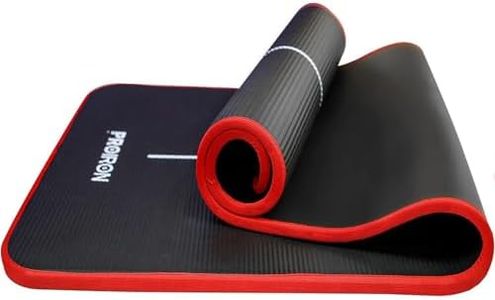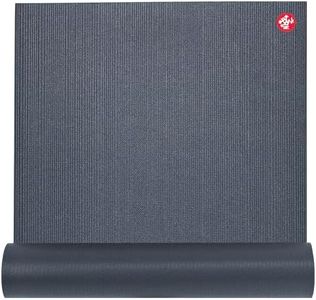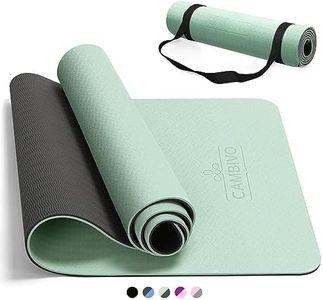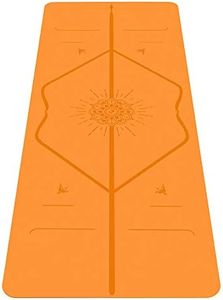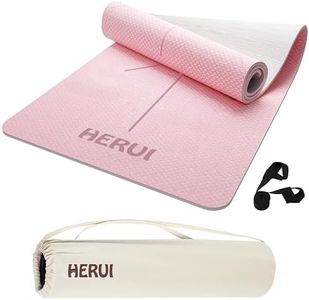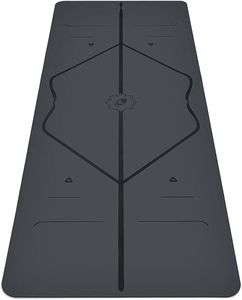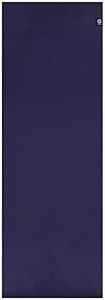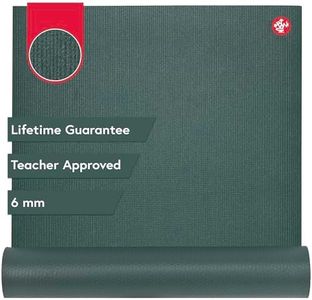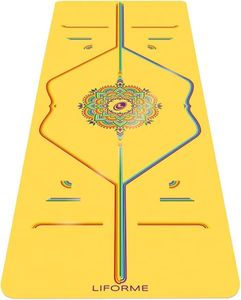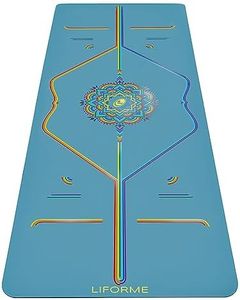We Use CookiesWe use cookies to enhance the security, performance,
functionality and for analytical and promotional activities. By continuing to browse this site you
are agreeing to our privacy policy
10 Best Pilates Mats
From leading brands and best sellers available on the web.By clicking on a link to a third party's website, log data is shared with that third party.
Buying Guide for the Best Pilates Mats
Choosing the right Pilates mat can make a big difference in your comfort, support, and overall enjoyment of your exercise sessions. Pilates mats are designed to provide cushioning and stability while you perform floor-based movements, helping you avoid injuries and enhance your practice. When picking a mat, consider how and where you’ll use it, your preferences for texture and thickness, and any special needs such as extra grip or softness.ThicknessMat thickness refers to how much padding the mat provides. This is important because Pilates involves a lot of exercises done lying on the floor, so you want enough cushion to protect your spine, hips, and joints from hard surfaces. Thin mats (around 1/8 inch or 3mm) are more portable and give you a strong connection to the floor, which is great for balance, but may not offer enough comfort for sensitive joints or longer sessions. Medium thickness (around 1/4 inch or 6mm) offers a good balance of comfort and stability for most users, while extra thick mats (1/2 inch or 12mm and more) provide the most cushioning, ideal if you have joint sensitivity or do Pilates on hard floors. Your body and comfort needs will guide your choice: go thinner if you prioritize stability, thicker if you want more padding.
MaterialThe material of a Pilates mat affects its durability, comfort, grip, and how easy it is to clean. Common materials include PVC, TPE (thermoplastic elastomer), rubber, and sometimes natural fibers like cotton or jute. PVC is durable and provides good cushioning, but can be less eco-friendly and sometimes less grippy when wet. TPE and natural rubber are more environmentally friendly, generally offer excellent grip, and can be softer to the touch. Natural fiber mats absorb sweat better but may wear out faster. Consider how sweaty your workouts will be, whether you have allergies, and if environmental impact is a concern. Choose the material that fits your preferences for comfort, feel, and sustainability.
Texture and GripTexture refers to the feel of the mat’s surface. A mat with a textured or patterned surface can help prevent slipping, which is especially helpful if you sweat or perform fast-paced movements. Smoother mats might feel nicer to your skin but can get slippery, especially if they’re made from certain materials. If grip is a top priority, try to check the mat’s surface or look for reviews mentioning stickiness or non-slip features. Think about your personal comfort with rough vs. smooth surfaces, and whether you need extra grip based on the type and intensity of your workouts.
Size and PortabilityMats come in varieties of length, width, and weight. A standard mat is usually about 68 inches long and 24 inches wide, but taller users might want a longer mat for full-body support. Portability matters if you plan to carry your mat to a studio or travel often—a lightweight mat that rolls up tightly will suit you best. If your mat will stay at home, you might prefer a larger, heavier mat for more movement space. Think about where you’ll use the mat and how much you’ll need to transport it, and pick a size and weight that fits your routine.
Ease of CleaningSweat and dirt can accumulate on your Pilates mat, so ease of cleaning is important for hygiene. Some mats are more resistant to absorbing moisture and can be wiped clean easily, while others may need more care or even hand-washing. Mats with closed-cell surfaces are generally easier to clean than open-cell or fabric-based mats which can absorb sweat and odors. If you expect to use your mat frequently or in a shared environment, choose one that is easy to wipe down and dries quickly.
